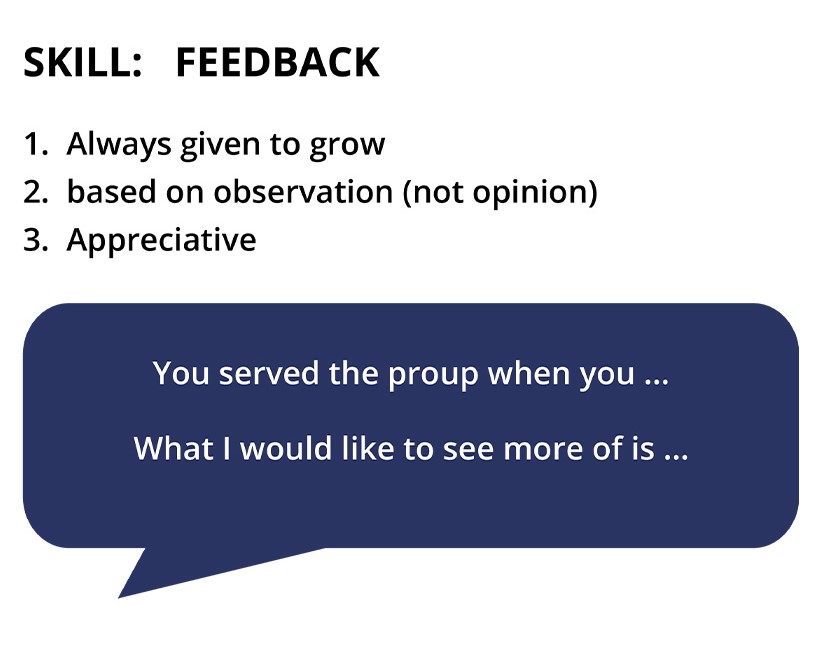Appreciate Feedback
Activity Summary
This activity supports students to give constructive and positive feedback to one another.
Activity Plan
1
2 mins
Students organise themselves into their groups.
2
5 mins
Ask students to discuss in their groups – what is the purpose of feedback? Students discuss in their groups and then feedback to the wider class.
3
5 mins
Share the below model of feedback with the class & discuss.

4
5 mins
Ask students to create some prompt sentences for giving feedback for example:
- You demonstrated… skill when you….
- I saw that you are good / strong / skilled at …. when you…
- You helped me with …. when you …
5
10-20 mins
Depending on the time you have and the number of students in each group, set a timer for students to start giving feedback to one another (approx 2 mins per student receiving feedback). Make sure all students receive feedback, and that all team members have to give minimum one piece of feedback to each team member. The student receiving feedback takes notes of what they receive while their teammates are sharing.
After the 2 minutes, students shift the focus to another member of their group. As the teacher you keep track of time in this activity.
6
5 mins
After all group members have received feedback, ask all the students to go to their individual seat in the classroom. Take 2 minutes in complete silence, where students take the time to reflect on the feedback they have received, and can perhaps take a few more notes on what they learned/ received and if it sparks more reflections in them.
Tips & Tricks
- This reflective activity is designed for students that have been working together (ona project, activity, assignment etc.) The activity scaffolds students to reflect on their peers strengths and help them identify their own strengths through peer-to-peer positive and growth-oriented feedback.
- Discuss with the class any ‘rules’ they think might be important for this activity. As giving and receiving feedback can be a vulnerable experience – creating a safe space is very important.
- As a teacher, ensure your students are mature enough and ready for this exercise, so that it doesn’t become a destructive experience, as this can then become an experience with opposite effects for the students than the learning outcomes.
- This activity works well in smaller groups.
Additional Resources
This activity is from the Kaospilot Professional Program Creative Leadership by Paul Natorp and David Storkholm. Learn more about Creative Leadership:
https://www.kaospilot.dk/product/creative-leadership/
Learn more about appreciative feedback: https://www.t-three.com/thinking- space/blog/why-we-need-to-give-more-positive-feedback
